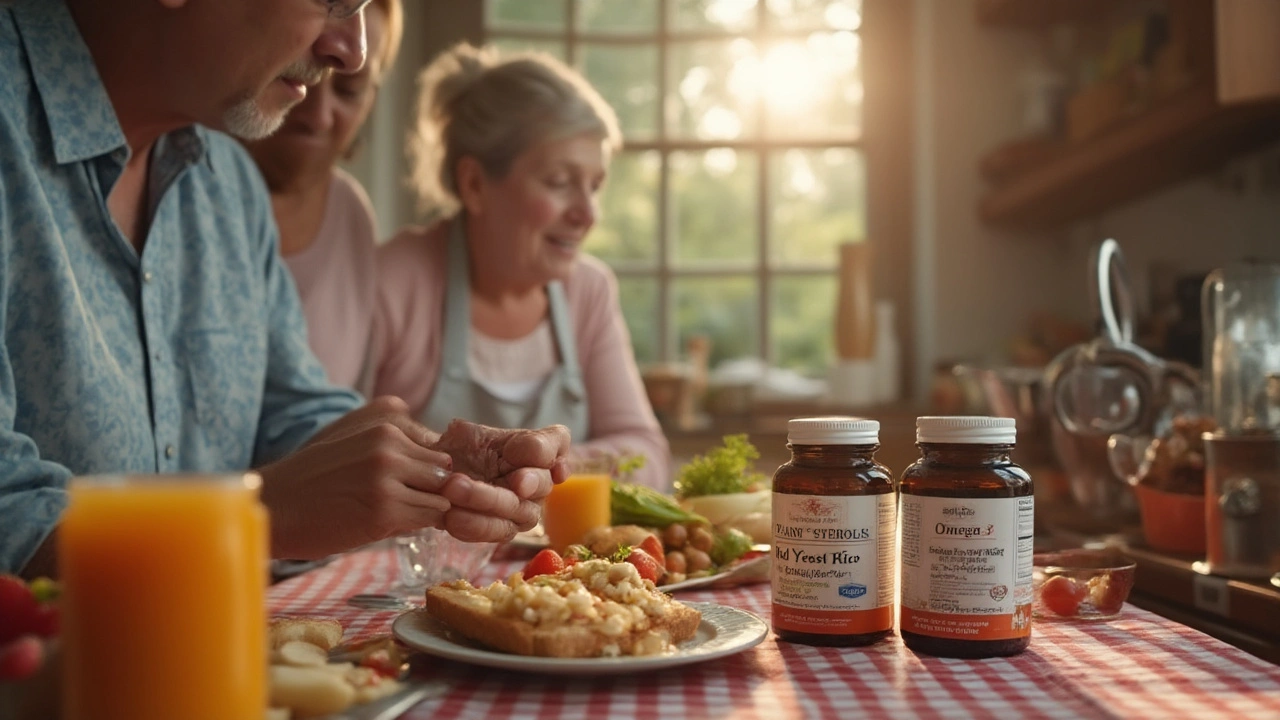Cholesterol Supplements That Actually Lower Your LDL
If you’ve been told your “bad” cholesterol is high, the first thought is usually a prescription statin. But not everyone can tolerate statins, and many people prefer a supplement‑first approach. Below you’ll find practical info on safe over‑the‑counter options, plus two newer prescription‑only agents that act like supplements for those who need extra help.
Why Look at Supplements First?
Most cholesterol issues stem from diet, weight, and lifestyle. Adding a supplement can give your liver an extra push to clear LDL without the muscle aches some statins cause. The key is choosing products that have real research behind them, not just hype.
Top Supplements Backed by Evidence
1. Plant Sterols & Stanols – These compounds look like cholesterol to your intestines and block its absorption. A daily dose of 2 g can drop LDL by about 10%. 2. Soluble Fiber (Beta‑Glucan) – Found in oats, barley, and supplement powders. It binds cholesterol in the gut, pulling it out before it enters your bloodstream. Aim for 3 g per day.
3. Red Yeast Rice – Naturally contains monacolin K, which is chemically identical to low‑dose lovastatin. It can lower LDL 5–15%, but watch the label: some brands contain high levels of citrinin, a toxin. 4. Omega‑3 Fish Oil – EPA and DHA don’t drop LDL much, but they raise HDL (the “good” cholesterol) and cut triglycerides, which together improve overall heart risk. 5. Niacin (Vitamin B3) – In modest doses (500 mg), niacin raises HDL and modestly reduces LDL. High doses can cause flushing; start low and build up.
When you combine two or three of these, the LDL‑lowering effect adds up without a prescription.
Prescription‑Only “Supplement‑Style” Options
If lifestyle changes and over‑the‑counter pills aren’t enough, doctors now have two newer agents that work like targeted supplements.
Bempedoic Acid – Approved for people who can’t tolerate statins. It blocks a liver enzyme earlier in the cholesterol‑making pathway, so you get LDL drops of 15–20% with fewer muscle side effects. Inclisiran – A tiny RNA molecule given as an injection twice a year. It tells your liver to make less PCSK9 protein, which normally sabotages LDL receptors. The result is a steady 40–50% LDL reduction.
Both are pricey compared to a bottle of oat bran, but insurance may cover them for high‑risk patients. Talk to your doctor if you’ve hit the ceiling on over‑the‑counter options.
How to Pick What’s Right for You
1. Check your labs. Know your exact LDL number and any other lipid markers. 2. Start simple. Add a plant sterol spread or a fiber supplement first – they’re cheap and safe. 3. Watch for interactions. Red yeast rice can act like a statin, so avoid it if you’re already on one. 4. Monitor side effects. Muscle pain, flushing, or digestive upset mean you should adjust the dose or switch. 5. Talk to a professional. A pharmacist or doctor can help you stack supplements without over‑loading your liver.
Lowering cholesterol isn’t about one magic pill; it’s a mix of diet, habits, and the right supplement blend. Start with evidence‑backed choices, track your numbers, and move up to prescription‑only options only if needed. Your heart will thank you.
Can supplements like red yeast rice, plant sterols, or omega-3s really lower cholesterol? Learn what works, what doesn’t, and get genuinely useful tips.
Jul, 16 2025

